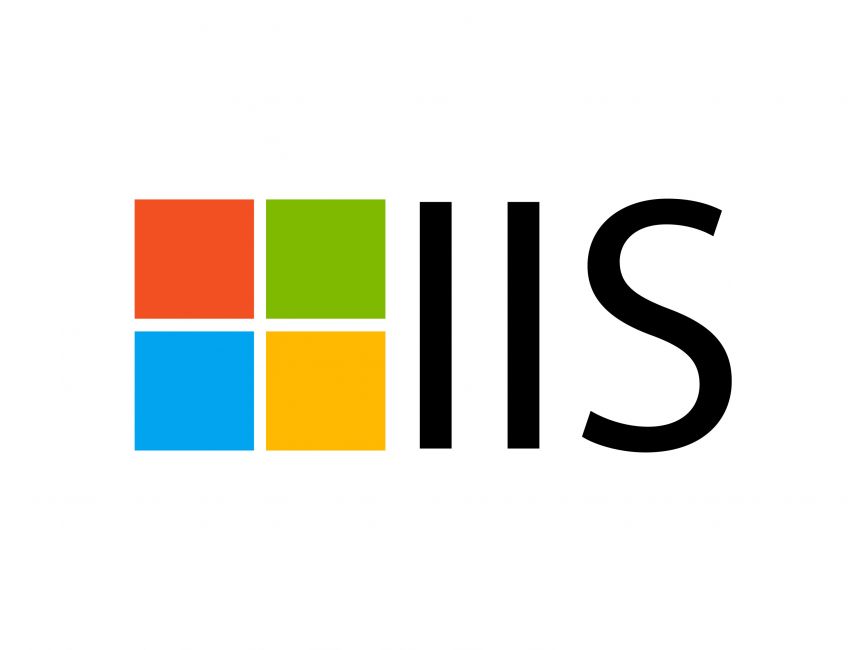Configuring Tracing and Debugging Using Failed Request Tracing in IIS
Jul 13, 2025 am 01:08 AMFailed Request Tracing is a debugging tool provided by IIS to troubleshoot problems such as 500 errors or slow page loading. 1. First install the module through "Add Roles and Functions"; 2. Enable the tracking function in IIS Manager; 3. Configure tracking rules, such as triggering by status code or execution time; 4. The logs are stored in inetpub\logs\FailedReqLogFiles by default; 5. Use the Failed Request Tracing Viewer to view XML logs and analyze the problems of each stage of the request; 6. It is recommended to enable, close and clean the logs on demand in a timely manner, and combine other logs to improve the inspection efficiency.

When your website is running on IIS, a seemingly unavailable error suddenly appears, such as a 500 error or a slow page load, you need a more granular way to troubleshoot the problem. Failed Request Tracing is a very practical debugging tool provided by IIS. It allows you to see every step the request goes through within IIS and helps you locate what is wrong with it.

Turn on the Failed Request Tracing function
To use this feature, you must first make sure it is enabled on the server. Failed Request Tracing for IIS is not a module installed by default and needs to be installed manually through "Add Roles and Features".

- Open Server Manager on Windows Server
- Go to "Add Roles and Features"
- Find "IIS" -> "Web Server" -> "Diagnostics" section
- Check "Failed Request Tracing"
After installation, you also need to enable the tracking function in the specific site or application pool. Enter IIS Manager, select the corresponding site, double-click "Failed Request Tracing Rules", and then click "Enable" on the right.
Note: Log files will be generated after turning on. These files are stored by default in
inetpub\logs\FailedReqLogFilesin the site directory. You can modify the path as needed, but it is recommended to keep the default settings for easy search.
Configure tracking rules
Turning on tracking is not enough, you also need to configure tracking rules to tell IIS under which circumstances will the request details be recorded. A common practice is to track specific status codes, such as 500, 404, or requests that have been executed for too long.
In the Failed Request Tracing Rules interface, you can add new rules:
- Select the type of request to track (all content, specific status code, or time range)
- Set trigger conditions, such as the response status code is greater than or equal to 500, or the execution time exceeds 3 seconds.
- Specify the level of event to be recorded, it is usually recommended to select "Verbose" to capture more details
For example, if you find that an API interface occasionally returns 500 errors but is difficult to reproduce, you can set up a rule to track all 500 errors requests. Once an exception occurs, IIS will automatically generate a detailed XML log file, recording the entire process from receiving the request to final output.
View and analyze logs
The generated log is in XML format. Although the structure is clear, it is not very friendly to read directly. Fortunately, IIS provides a graphical viewing tool - Failed Request Tracing Viewer , which can be opened directly in the IIS Manager.
The opening method is as follows:
- Return to the site's "Failed Request Tracing Rules" interface
- Click "View Log Files" on the right
- Select the corresponding log entry and double-click to open it
In this interface, you will see every module, processing stage, and time-consuming process that the request passes. Focus on entries with status "Warning" or "Error", which are often the source of the problem.
Sometimes you will find that a certain request is stuck in the ExecuteRequestHandler stage, which means there is a problem with the specific content handler; if it fails in AuthenticateRequest stage, it may involve permission configuration issues.
Tips and precautions
- Don't turn on all requests for a long time : because it will generate a large number of logs, affect performance, and even occupy disk space.
- Enable rules on demand : Only temporarily enable specific rules when troubleshooting problems, and close them in time after the problem is solved.
- Regularly clean logs : Avoid log accumulation causing server resources to be tight.
- Combined with other logs, analysis : such as IIS logs and Windows Event Logs, can locate problems faster.
Basically that's it. Mastering the usage of Failed Request Tracing is equivalent to giving your IIS debugging toolbox a handy knife. If you encounter difficult and complicated diseases, you won’t be helpless.
The above is the detailed content of Configuring Tracing and Debugging Using Failed Request Tracing in IIS. For more information, please follow other related articles on the PHP Chinese website!

Hot AI Tools

Undress AI Tool
Undress images for free

Undresser.AI Undress
AI-powered app for creating realistic nude photos

AI Clothes Remover
Online AI tool for removing clothes from photos.

Clothoff.io
AI clothes remover

Video Face Swap
Swap faces in any video effortlessly with our completely free AI face swap tool!

Hot Article

Hot Tools

Notepad++7.3.1
Easy-to-use and free code editor

SublimeText3 Chinese version
Chinese version, very easy to use

Zend Studio 13.0.1
Powerful PHP integrated development environment

Dreamweaver CS6
Visual web development tools

SublimeText3 Mac version
God-level code editing software (SublimeText3)
 Configuring Request Limits and Connection Timeouts in IIS
Jul 08, 2025 am 12:36 AM
Configuring Request Limits and Connection Timeouts in IIS
Jul 08, 2025 am 12:36 AM
To limit the size of client requests, the maxAllowedContentLength parameter can be modified in web.config, such as setting it to 104857600 (100MB), and synchronizing the maxRequestLength of ASP.NET at the same time; to reasonably set the connection timeout time, it can be modified through the IIS manager or appcmd.exe command, with the default of 120 seconds, and the API scenario is recommended to set it to 30-90 seconds; if the request queue is full, you can increase MaxClientConn and QueueLength, optimize application performance, and enable load balancing to relieve stress.
 Configuring HTTP Response Headers for Caching and Security in IIS
Jul 07, 2025 am 12:23 AM
Configuring HTTP Response Headers for Caching and Security in IIS
Jul 07, 2025 am 12:23 AM
Configuring HTTP response headers in IIS to optimize cache and improve security can be achieved by setting cache-related headers and adding security response headers. 1. Set cache-related headers: By configuring the clientCache element in the web.config file, set the Cache-Control and Expires headers for static resources, for example, use cacheControlMaxAge to specify the cache time, and fine-grained control can also be performed for specific file types (such as .jpg), but avoid HTML page caching for too long. 2. Add security-related headers: Configure X-Content-Type-Optio through customHeaders in web.config
 Configuring Directory Browsing Permissions and Behavior in IIS
Jul 10, 2025 pm 02:08 PM
Configuring Directory Browsing Permissions and Behavior in IIS
Jul 10, 2025 pm 02:08 PM
ToenableandcustomizedirectorybrowsinginIIS,firstinstallandenabletheDirectoryBrowsingfeatureviaServerManagerandIISManager;next,customizetheappearanceusingheaderandfooterHTMLsnippets;thenconfiguredefaultdocumentstopreventunintendeddirectorylistings;fin
 Configuring Shared Configuration for Multiple IIS Servers in a Web Farm
Jul 11, 2025 am 01:50 AM
Configuring Shared Configuration for Multiple IIS Servers in a Web Farm
Jul 11, 2025 am 01:50 AM
SharedconfigurationinIISallowsmultipleserverstouseacentralizedapplicationHost.configfile,ensuringconsistencyacrossawebfarm.1.Itenablesallserverstopointtoasharedconfigurationlocation.2.SetupinvolvesusingaUNCpath,enablingthefeatureinIISManager,andimpor
 Configuring Authentication Methods (Windows, Forms, Basic) in IIS
Jul 09, 2025 am 12:51 AM
Configuring Authentication Methods (Windows, Forms, Basic) in IIS
Jul 09, 2025 am 12:51 AM
Windows authentication is suitable for internal applications and is automatically authenticated through domain accounts; the steps are to open IIS Manager, select a site, enable Windows authentication, and ensure HTTPS is used. Forms authentication is suitable for custom login pages. You need to configure the login URL and timeout time in web.config, and develop a login page to verify users, encrypt your password and use HTTPS. Basic authentication is lightweight but not secure. It is only used when HTTPS is enabled. It needs to be enabled in IIS and cooperate with local or domain accounts. Password leakage is often caused by ignoring HTTPS.
 Managing MIME Types for Specific File Extensions in IIS
Jul 08, 2025 am 02:07 AM
Managing MIME Types for Specific File Extensions in IIS
Jul 08, 2025 am 02:07 AM
MIME type is a mechanism by which the server identifies file content types, and missing or incorrect configuration can cause resource loading to fail. There are two main ways to manage MIME types with specific extensions in IIS: 1. Add or modify them through the IIS manager graphical interface; 2. Configure in the web.config file. Common MIME types that need to be added manually include .webmanifest, .woff2, .svg, .mp4 and .pdf. Notes include inheritance issues, IIS version differences and browser cache impact. Proper configuration is essential to ensure that modern web resources are loading properly.
 Using appcmd.exe for IIS Command-Line Administration Tasks
Jul 14, 2025 am 01:11 AM
Using appcmd.exe for IIS Command-Line Administration Tasks
Jul 14, 2025 am 01:11 AM
appcmd.exe is a command line tool that comes with IIS7 and above, which can be used to efficiently manage IIS. 1. Can be used to manage sites and applications, such as starting and stopping sites (such as appcmdstopsite/site.name:"MySite"), list running sites, and add or delete applications. 2. Configurable application pools, including creating (appcmdaddapppool/name:MyAppPool), setting .NETCLR version (appcmdsetapppool/apppool.name:MyAppPool/managedRuntimeVersion:v4
 Troubleshooting Issues Arising After Applying Windows Updates on IIS Servers
Jul 16, 2025 am 01:27 AM
Troubleshooting Issues Arising After Applying Windows Updates on IIS Servers
Jul 16, 2025 am 01:27 AM
Frequently asked questions about IIS servers after Windows update can be solved through the following steps: 1. If the IIS service cannot be started, check the service status and event log, try to restart the service or re-register/install IIS; 2. When the application pool crashes abnormally, check the application log, confirm the .NET version and permission settings, try to reset the identity or use the built-in account; 3. When the website has HTTP500 errors or blank pages, enable detailed error information, check the module configuration, and test the location problem through local browsing and simple pages; 4. When SSL binding or certificate fails, verify the binding configuration, certificate trust and private key permissions, detect port conflicts, and use tools to test the SSL connection, and rebind the certificate or update the root certificate if necessary.






